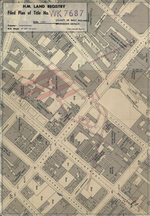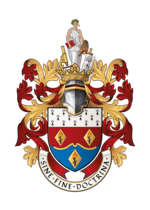Birmingham Guild of Handicraft
1890 establishments in EnglandArt schools in EnglandArts and Crafts movementEducational institutions established in 1890Guilds in England ... and 1 more
History of Birmingham, West Midlands

Birmingham Guild of Handicraft was an Arts and Crafts organisation operating in Birmingham, England, established at the end of the 19th century.
Excerpt from the Wikipedia article Birmingham Guild of Handicraft (License: CC BY-SA 3.0, Authors, Images).Birmingham Guild of Handicraft
Great Charles Street Queensway, Birmingham Ladywood
Geographical coordinates (GPS) Address Nearby Places Show on map
Geographical coordinates (GPS)
| Latitude | Longitude |
|---|---|
| N 52.482745 ° | E -1.90255 ° |
Address
New Guild House
Great Charles Street Queensway 43;45
B3 2LX Birmingham, Ladywood
England, United Kingdom
Open on Google Maps










